WeatherFlow is a relatively recent entrant to the home weather station market, although it has years of experience. Its coastal network of stations has been delivering vital information to meteorologists for years and has proven useful (and durable) in landfalling hurricanes.
The Tempest Weather Station is WeatherFlow’s first attempt at a home weather station. For the most part, it’s a good start. It’s the only one of our stations with built-in lightning detection, one of Tempest’s standout features, and operates entirely on solar power.
We found that the real-time lightning data matched better with data from professional lightning detection networks. It regularly detected distant lightning faster than any other station we’ve tested. In addition to lightning data, the Tempest also measures indoor and outdoor temperature and humidity, barometric pressure, and UV and light intensity.
Wind is measured by a sonic anemometer which we found to be fairly accurate. And up until the Ecowitt Wittboy, the Tempest was the only home weather station to use a haptic rain sensor.
For nearly the entire time that the Weather Station Experts have existed, the Tempest Weather System (formerly the WeatherFlow Tempest) has been our top pick. And there’s a reason. Since its debut in 2020, it has become one of the most popular home weather stations on the market, thanks to its easy installation, incredible feature set, and smart home connectivity.
While not “cheap,” a $339 retail price puts it in the mid-range of home weather stations. The Tempest includes all the basics plus UV and solar, outstanding lightning detection, and a haptic rain sensor that, at launch, was a first for home weather stations and was recently copied by Ecowitt for its Wittboy all-in-one.
I originally reviewed the Tempest elsewhere in 2020 and reposted the review here in 2021. But it’s been more than three years. That’s a lifetime in tech, so this summer, we set out to re-review the Tempest Weather System.
Unfortunately, time had taken a toll on our launch model, Tempest’s internal battery, which would no longer take a charge. Tempest sent us a new unit, which we’re using for the review here (within days of our support request, too!). From the outside, all the equipment looks identical.
In our original review, we loved everything but the haptic rain sensor. Has anything changed in our thinking? Keep reading.
(Editor’s note: WeatherFlow spun off its weather station unit into a separate company, called Tempest. The name of the WeatherFlow Tempest is now the Tempest Weather System, and is how we will refer to the station here on TWSE.)
Setting up the Tempest Weather System
The installation of the Tempest remains its strong point and has, if anything, improved since we last tested the station in 2020. While most home weather stations require 30-60 minutes to install, you may have everything running and reporting in as little as five minutes if you already have a place to mount your station. You can mount it to the top of a mast or screw it onto just about anything using the tripod mount.
It’s surprisingly small and light at 7.25 inches by 7.25 inches by 12 inches and just 3.5 pounds, making the installation easy. As you can see from the picture, nearly the entire sensor fits in my hand. This compact design allows for much less clumsy installation — if you’ve installed a weather station before, you know the sensor suites are often bulky and hard to maneuver.
Since everything is pre-assembled, you place the included base station within range of your Wi-Fi router and the Tempest within range of the base station. To be safe, we recommend less than 100 feet for the most reliable communication. You should start seeing data in your app within minutes. One tip, though: don’t forget to turn the sensor suite on! If you don’t do that first, the installation will fail.
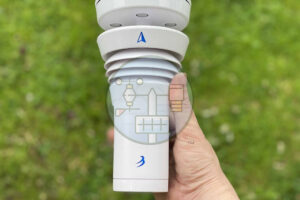
Lots of functionality
There is no console with the Tempest: everything is handled through the app. Save for a color theme change from WeatherFlow’s sky blue to the purple shades that Tempest now uses, everything is the same. Data updates every three seconds, even if you’re not on the same Wi-Fi. By a large margin, that’s faster than any other station: most updates to the app in 60-second increments.
The Tempest reports temperature, humidity, wind speed and direction, and rainfall, and also includes a UV and light sensor, as well as built-in lightning detection. Thanks to haptic technology, it can also sense precipitation intensity.
Data collected by your Tempest is sent to WeatherFlow, which is used to improve the accuracy of its local forecasts. It is also shared with the National Weather Service and others as well. As expected of a smart weather station, the Tempest supports Amazon Alexa and IFTTT. We did notice that support for Google Home (formerly Google Assistant) is no longer available, a change from the integrations available at launch.
From our understanding, this is due to Google ending support for the methods Tempest used to connect to Assistant. It appears the change is substantial enough to require significant modifications to the platform itself, which, at least for the moment, Tempest developers do not plan on correcting.
Google Home is used by roughly a quarter of all smart speaker users, so this may be a significant issue for some. It’s enough to impact our scoring metrics, as other platforms have not had the same problem and still offer Google Home support.
Tempest Weather System Accuracy and Performance
While launch units did have issues with calibration, our analysis of recent reviews seems to suggest that’s no longer an issue. The station is supposed to self-calibrate, so you should not have to make any changes if you followed the setup correctly.
Data reports anywhere from two to 30 seconds, depending on the sensor. In our previous test in 2020, we found that overall, the readings from all sensors were within acceptable ranges (although humidity readings sometimes felt a bit on the high side). Still, the haptic rain gauge struggled (we consider temperatures within two degrees, humidity within 5%, barometric pressure within .05″, and rainfall within .02″ of an inch “acceptable” — we don’t include wind because most home weather stations are not located at the proper height).
The Tempest also includes lightning detection, but that’s so good it deserves a separate section (hint: keep reading).
In the re-review, we aimed to determine whether the haptic rain gauge had improved. We loved the sensitivity and how quickly the Tempest informed us that it had detected rain, often within seconds. This is perfect for smart home applications, especially smart home sprinkler systems. However, we were much less impressed with its accuracy in measuring rainfall.
The “Rain Check” feature remains, now called NearCast Rain. It seems to function a bit differently than Rain Check, though. I don’t remember Rain Check in 2020 adjusting measured rainfall in real-time; instead, the adjustment happened overnight. Here, it seems to be continuously occurring. However, I question whether it is really necessary.
In 2020, the Tempest was under-measuring rainfall whether the feature was on or off. To our surprise, in our 2024 test, with NC Rain off, in extremely heavy rain, the measured rainfall was within .05″ of our KestrelMet 6000. Previously, the differences were measured in tenths. Keeping NC Rain on actually made the Tempest much less accurate, the complete opposite of our previous experience. We’d need to watch this over time, but this is a significant improvement and led to a slight adjustment upward in the Tempest’s overall score.
Years ago, the Rain Check adjustment was needed because the haptic rain gauge wasn’t working well. Now it may be working against it. While this may have some use to WeatherFlow for their forecast models, it isn’t a real measurement — rain is measured at the point of the gauge. We’re just not fans of the idea at all.
Read more: How to make your Tempest Weather System rain gauge more accurate
It still has the best lightning detection we’ve seen
So we told you to keep reading because the lightning detection is just that good. It is. Over the past decade, we’ve tested many lightning detection options from various manufacturers. We’ve seen it all, including some that felt like you’d have a better idea of incoming storms if you listened to static on AM radio.
That is not the case here at all. Both during our initial test and our re-review, the Tempest detected lightning strikes quicker and more accurately than any other system we’ve tested. We use lightningmaps.org during storms to verify strike data. The numbers were very close to what our Tempest saw, and the distance detection was reasonably accurate.
For fun, we tried to use IFTTT to light up our Nanoleaf Panels for each lightning strike, but unfortunately, it seems it’s rate-limited to once a minute, either on IFTTT’s or Tempest’s end. It would have been cool during the line of thunderstorms in near-real time flashing on our Nanoleafs, but it was not to be.
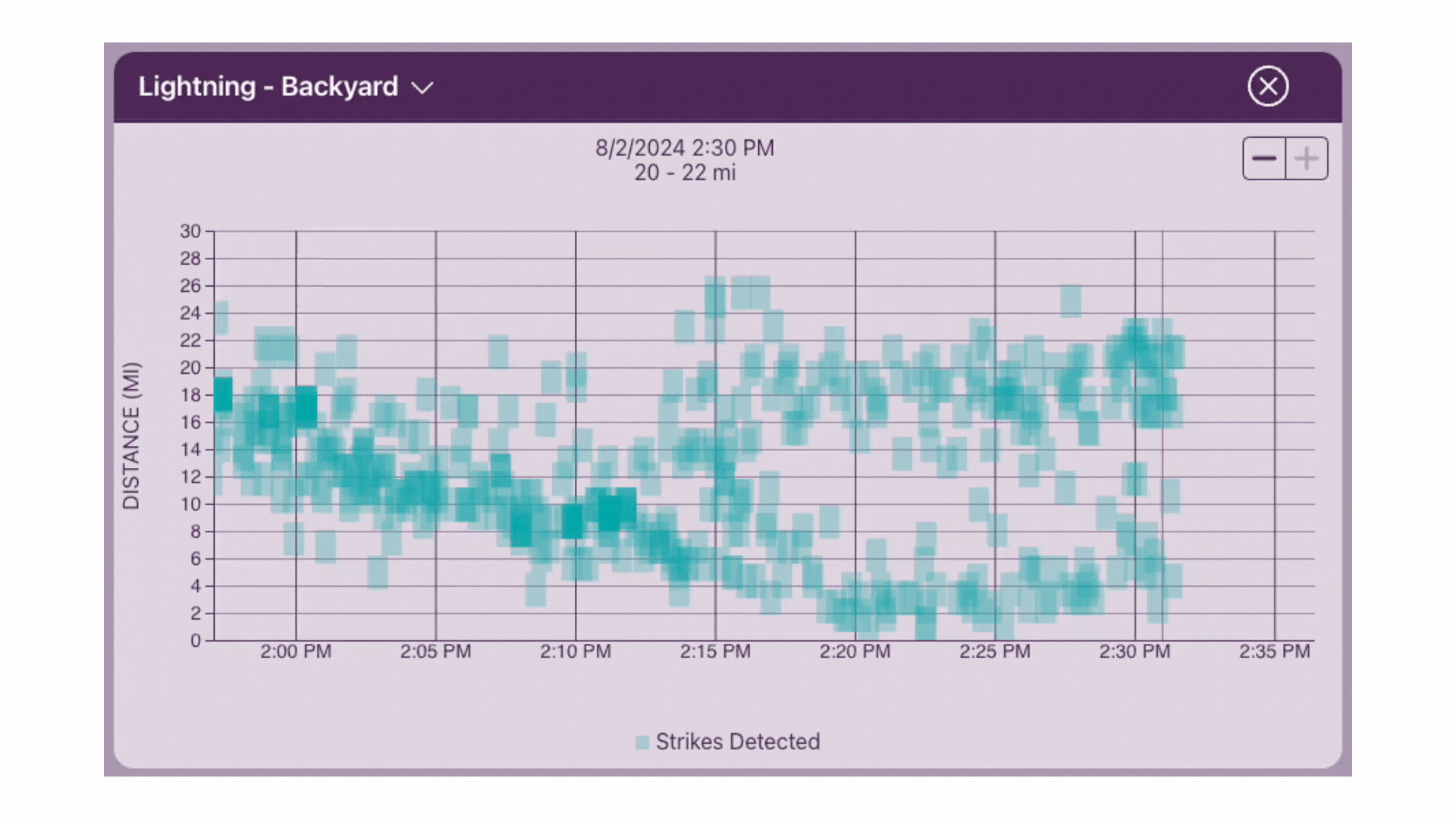
The Tempest Weather System has gotten better, for sure.
We were bummed about the performance of the haptic rain sensor in our original review and were perhaps the loudest in our criticism of it. However, we are happy to say that things have gotten much better. Lightning detection remains the top reason we keep it as our Editor’s Choice — there is no comparison in terms of performance with any other weather station.
Sure, the lack of Google Home support is a real pain for those in the Google ecosystem, but overall, the smart home capabilities remain robust. At $339, it’s not a bad deal, especially considering most decent home weather stations these days average around $500 or more. If you can not afford a pro-grade home weather station, the Tempest is probably your best bet.
Tempest Weather System
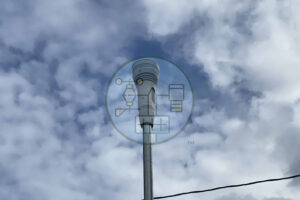
With exceptional lightning detection and fairly accurate instrumentation, the Tempest Weather System impresses for smart home readiness.
Product Brand: Tempest
4.7
Pros
- Super quick setup
- Outstanding lightning detection
- Fairly accurate instrumentation
- Ready for the smart home
Cons
- Haptic rain sensor doesn't measure rainfall accurately enough
- No expandability

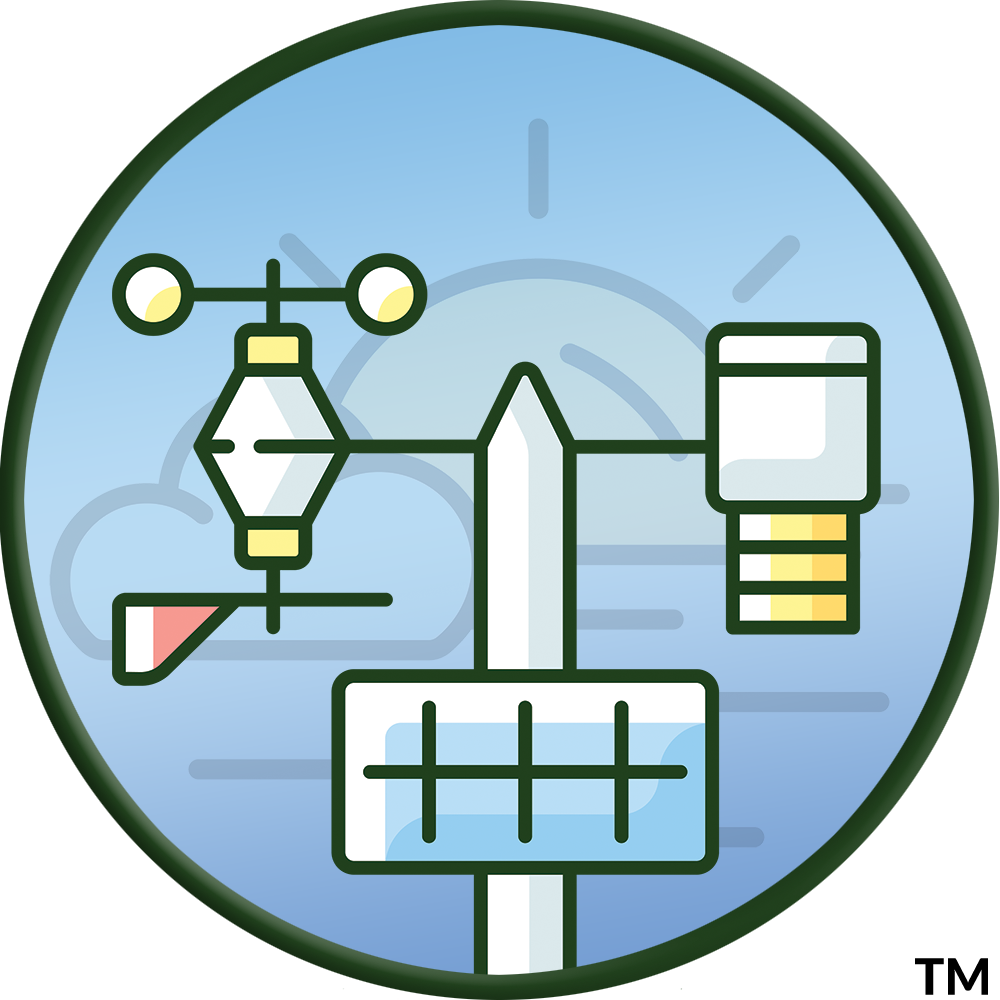
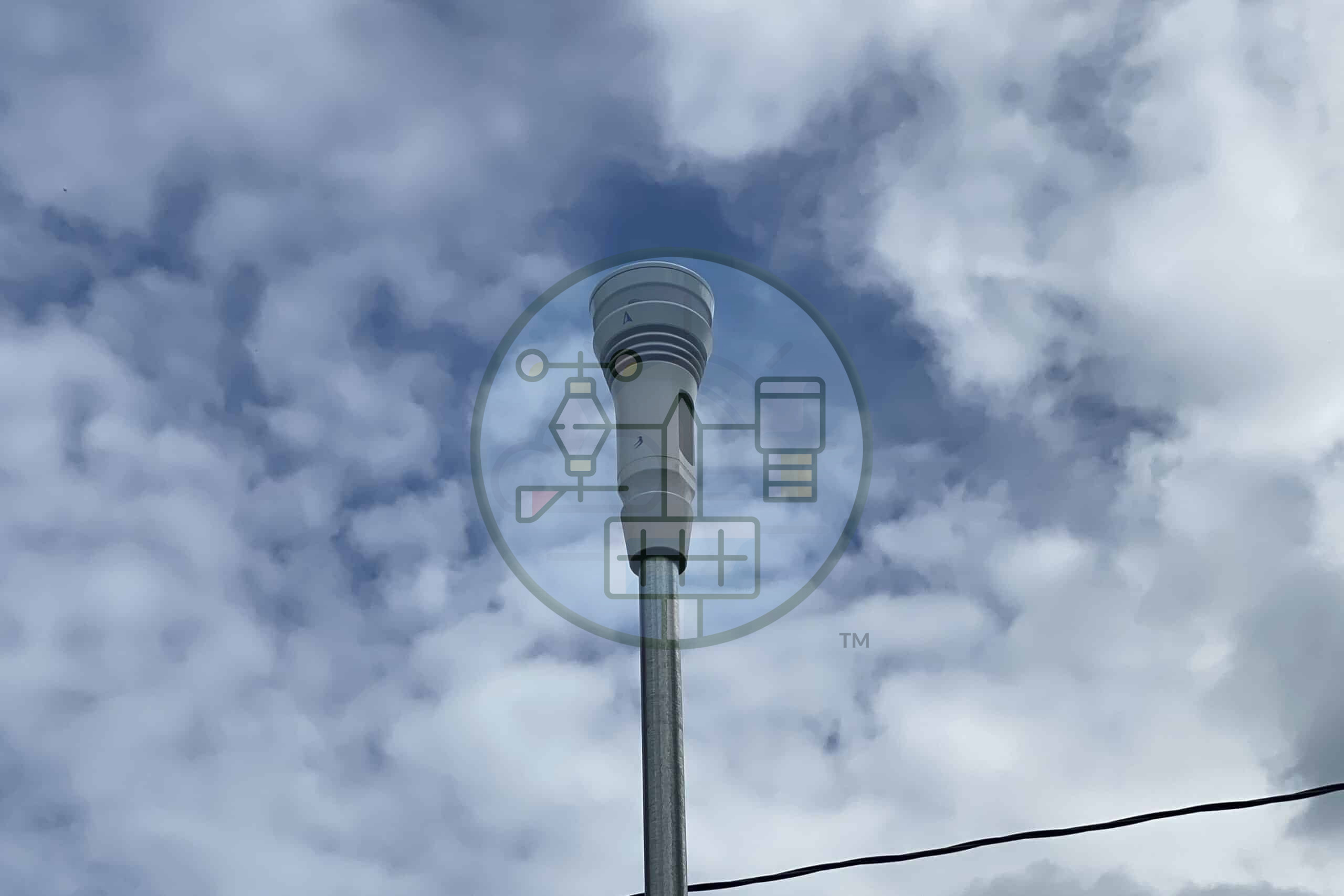

I have a Tempest station and pretty much agree wi what’s said in this article. But there’s no mention bof how accurate the UV measurements are. My station tends to show a much different UV level than weather apps and internet sites that give local weather. But neither of those say I’d they’re showing “projected” levels or “actual current” data
I mounted my Tempest sensor on the top of a fence post for an easy first installation. This exposed another negative of the construction of the sensor head; ants colonized the entire interior e contamination of the Tempest and the contamination caused the unit to fail. A major part of the failure was loss of charging capability, the solar charging could no longer keep up with the operating load. It appeared that the ON-OFF slide switch on the bottom circuit board was a main point of the fault.
After a couple of rounds of disassembly and alcohol cleaning and re-assembly for testing, the charging capability and measurements have been restored.
The tech support phone line provided nice conversation, but no offer of any actual help with repair or replacement.
After too much handling for testing, it looks like i have damaged the FPC cable inside the very top of the sensor housing; Now the UV and Rain sensors do not report with the other data.
Try to mount your unit so that there is no path for ants to get inside, but there are numerous openings in the unit, including the obviously necessary ones for air temperature, humidity, and pressure sensing.
I’ve had a Tempest system for over a year now. The rain sensor is always within 10% of other manual rain gauges in close proximity. That is accurate enough for me. I did have problems with the solar power module/battery built into the system after less than a year in service. WeatherFlow customer service was outstanding and reconciled the problem with a swift replacement. Overall, great instrument for my needs.
Chuck – thanks for this. We’re likely retesting this station soon, as the test unit we had was an launch unit. From my understanding the software has been improved — especially the rainfall. We definitely weren’t 10% away in our tests, more like 20-30%, and the “Rain Check” had to fix it. I think the rainfall adjustment is called something else now, though.
I’m trying to piece together how new the information in this article is, and I’m very confused how several comments appear to be a lot older than the publication date of the article. Was the article originally written well before this listed publication date? If so, you should really list that too. I’m referring specifically to the comments by the author about the problems with rain measurement and the early version tested.
Sean, thanks for the feedback, and we agree. We’re making this change across our site in the next UI refresh. This review is indeed several years old, which in most cases isn’t an issue as weather stations aren’t updated like a phone would be, etc. But I have never thought of it from this perspective, which could be most definitely confusing.
I tried the Tempest a few years ago (3 or 4 years ago) and I agree with all of this article. For the most part the things was pin-point accurate, except for the rain gauge! I am heavily involved with Storm Chasing and Skywarn Spotting and the rain gauge was a deal-breaker for me! We had a heavy rain here one day that my Ambient Weather WS-2000 gauge clocked at 2.55″ total, my tempest said .35″ and the next day when it was sunny and beautiful it jumped up to 3.02″. I can’t have inaccuracies in the rain gauge as that is what I use to report things to the National Weather Service during my Skywarn duties, had I used the Tempest I would have looked like an idiot AND been completely wrong. NWS uses this data to distribute Watches and Warnings so it’s imperative the rain gauge be accurate, at least for my case. I know not everyone is in the same case as I am. I haven’t tried the Tempest since, and if this article was truly written a few months ago in January 2023 it seems it hasn’t improved very much in the few years I last tried it…
I too have seen dramatic later adjustments to the rain measurements on my Tempest, usually appearing the next day. My understanding is those adjustments are part of the AI powered Weatherflow data analysis done in the background (usually overnight) which combines information flows from individual home units with other data sources “including measurements from satellites, aircraft, radars, and other surface weather stations” (per the Tempest website.) The next day readings are (in my experience) generally pretty accurate. The real time haptic rain measurements are not nearly as reliable.
If supremely accurate real time rain measurements are important (as they might be in some applications) the Tempest may not be the best choice, a point this review makes clear. The rest of the sensors, and especially the mobile app and its useful, information-packed user interface, are (again, in my opinion) superior, in some cases by far, to any other similarly priced consumer weather station.
* As an aside, Tempest customer support is near instantly available and astonishingly good. The support function from the half dozen other consumer grade weather station suppliers which I’ve tried is so poor that it alone is a deal killer with regards to the likelihood of future purchases.
It’s such a frustrating issue with the station. Everything else about it is top notch (part of the reason why we kept it an editor’s choice). I do remember during its Indiegogo days the rain gauge was the hold up. Feels like it was rushed out.
I do want to test Ecowitt’s version, to see if its just Tempest or its just the concept of haptic rain gauges in general being like this.
The rain sensor is not very good I have a Davis right next to the Tempest and the Davis shows .36″ of rain and the Tempest shows .55″ .
Their customer service is awesome. If you call them, you almost always are speaking to an individual within two minutes.
the rain sensor is able to be calibration if you have a accurate Guage you have nearby you can send rainfall amounts and have the Tempest Calibrated
Isn’t that the ‘Rain Check’ though?
I have one of the early models. Everything was working great then a couple of weeks ago the tempest dropped Wi-Fi connection. I took it down and went through the troubleshooting process, every day, multiple times a day. I guess my unit has kicked the bucket. I don’t know what I will buy to replace the tempest.
Doug – thanks for this. When we first did this review, it was brand new, but now with a few years, we’re able to get an idea of durability.
The Tempest definitely has a nice set of features that make it attractive, but you’re not the first person I’ve heard with an early unit failing. Have you reached out to support yet?
I also had one of the early Tempest devices, which reported accurate weather data for the first 8 months. Then, it began reporting errant readings, mostly for temperature. Here, on Oahu, we are seldom warmer than 94F, or cooler than 66F, so getting readings far outside that range, had me on the phone with customer service. At first, they were able to recalibrate the unit, based on my thermocouple. Then, the rain haptic sensor began reporting wild readings; we occasionally get a 15-inch downpour, but readings over 50″ were ridiculous! They eventually replaced the unit, at no charge, & it is much more-accurate. I still double-check with thermocouple, & analog rain gauge, but the new unit is seldom more than 2% different. I’m quite pleased with Tempest.